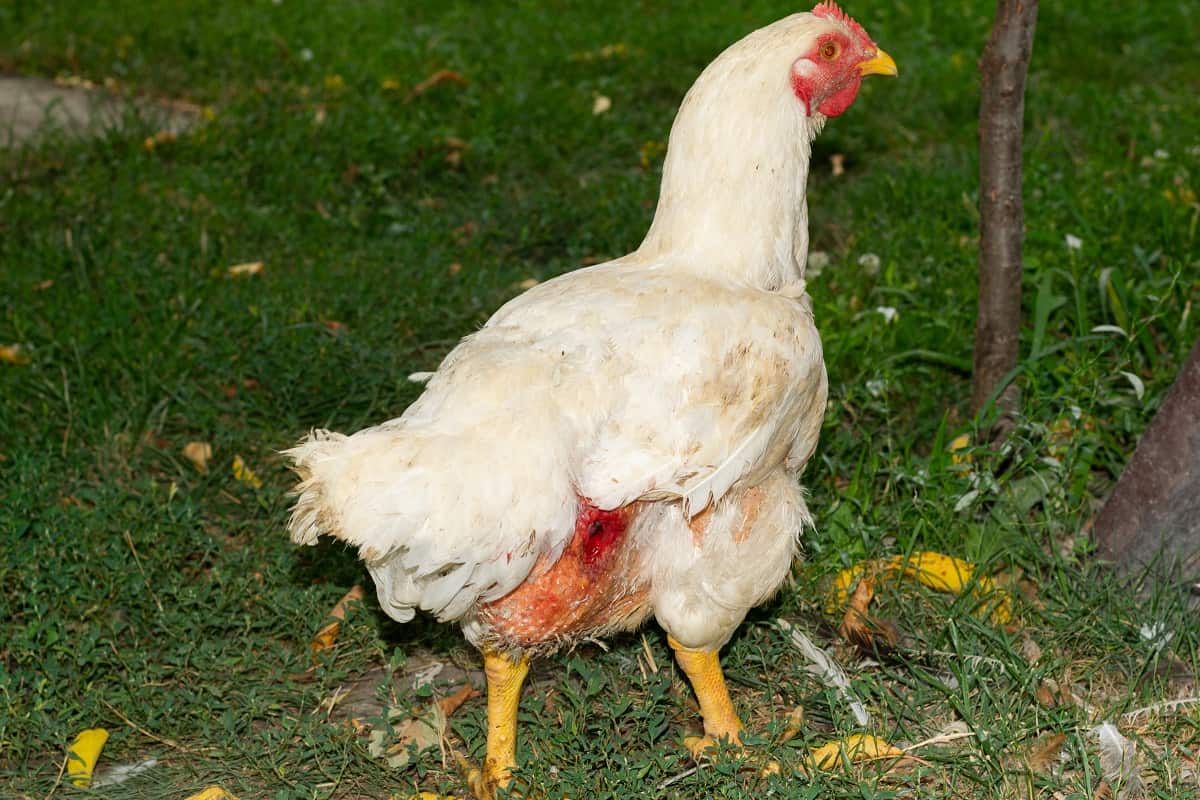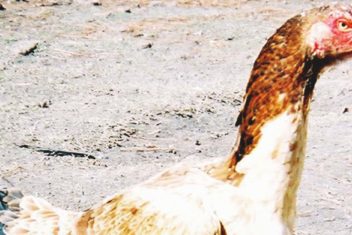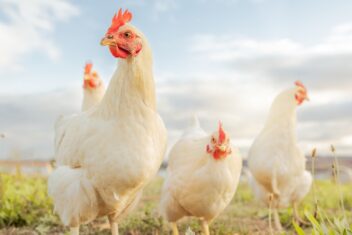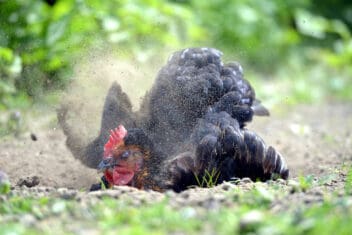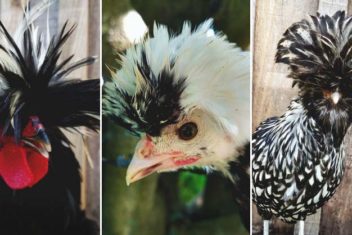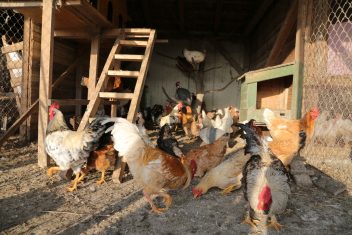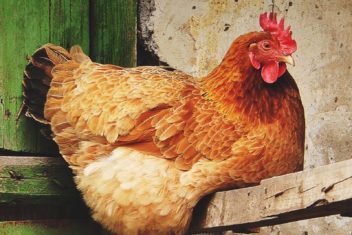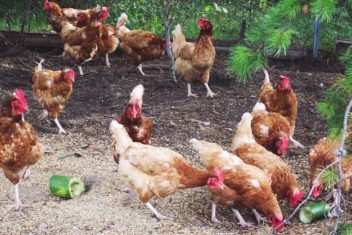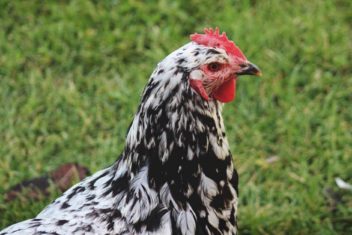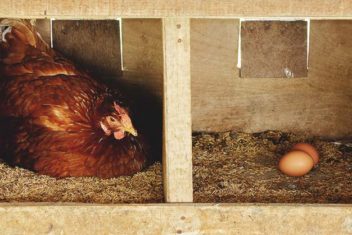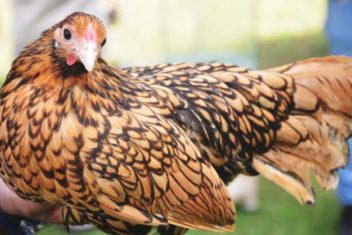Something that always seems to raise my blood pressure is when somebody mentions to me how animals are always kind to each other – that humans are the only species with the capacity to be violent or mean-spirited.
If you’ve ever raised chickens, you know that to be a blatant lie.
Don’t get me wrong – chickens can be sweet, cuddly, and super enjoyable to raise.
However, a chicken can also have a mean streak that’s half a mile wide. It can also be extremely violent and aggressive.
Chicken cannibalism isn’t something that people like to talk about, but if you’re going to raise chickens (especially in large numbers), it’s a sad reality. Remember, chickens are omnivores, and they don’t care whether dinner comes in the form of a bug – or another chicken.
To prevent it and deal with it in your flock, you need to be willing to address it head-on.
Here are some of the causes of chicken cannibalism and potential solutions. Fortunately, by taking the right steps now, you can stop it from becoming a problem in the future.
What is Chicken Cannibalism?
Chicken cannibalism is just as the name implies. It is when one or more chickens, typically stressed by poor management practice, resort to picking the comb, feathers, vent, or toes of another bird.
As soon as blood or open wounds are visible, the cannibalistic behaviors spread rapidly throughout the entire flock.
If you’re able to notice the cannibalism and intervene soon after it’s started, then you can often keep things in check and save the attacked bird.
However, left unchecked, it can quickly kill a bird and become a larger issue, with more birds being attacked by chickens who now have the taste for blood.
Causes of Chicken Cannibalism
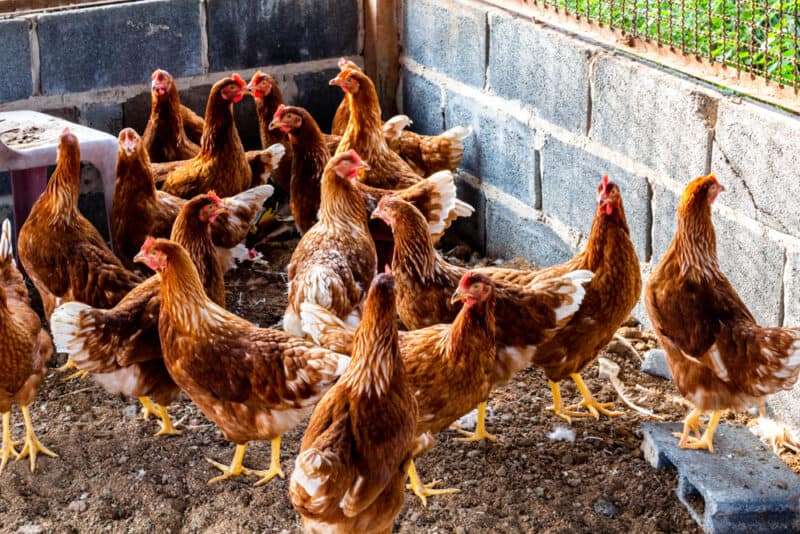
There are a few common causes of chicken cannibalism that you should address if you want to prevent it in your flock.
1. Overcrowding
Overcrowding is perhaps the number one cause of chicken cannibalism. When birds don’t have enough room to roam, they get irritable, cranky, and bored. This leads to feather pecking behaviors that often turn into full-blown cannibalism.
Overcrowding is problematic in another way, too – chickens that are being bullied don’t have enough room to escape.
2. Feed and Water Issues
It might sound obvious that not providing enough food and water can lead chickens to cannibalize each other. After all, it creates the illusion that they need to go into starvation mode and begin fighting for their food.
However, it’s not just an absence of food or water that can lead to cannibalism, but also unequal distribution. The pecking order is the top determinant in which birds get to eat and when, and if there’s not enough space at the feeder, some chickens are inevitably going to go hungry.
Diets that aren’t quite balanced can cause chickens to become cannibalistic. In particular, feed that is low in protein and other nutrients, like fiber and methionine, can cause birds to turn on each other.
3. Heat and Light
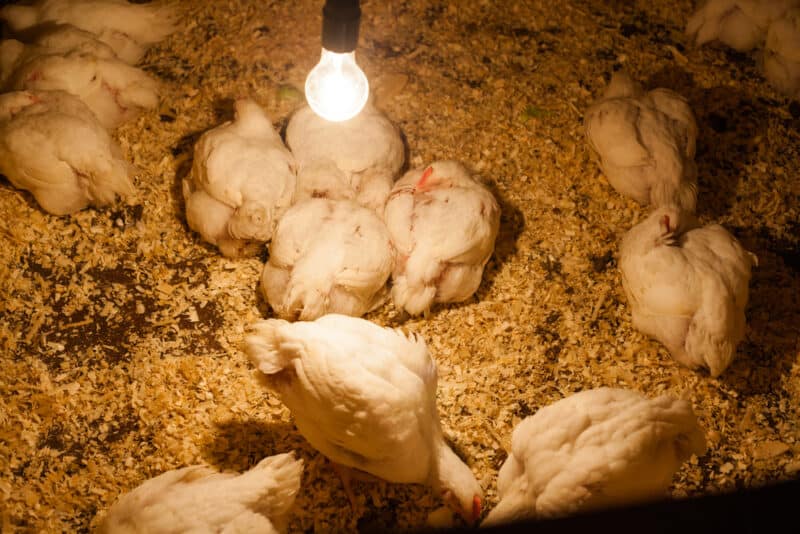
When birds are too hot, they can become cannibalistic. This is a phenomenon that is experienced in other animals too and not just chickens. Even humans get more aggressive when they’re overheated.
White light can cause chickens to become aggressive toward each other. White light tends to be much brighter and more intense than other colors. Even if you’re using a red light, it’s important to remember that chickens don’t need light 24 hours a day. Constant light can be extremely stressful for chickens and lead to bullying behaviors.
4. Abrupt Changes (of Any Kind)
Chickens don’t handle change well. Whether it’s moving the birds to a new location or moving the location of feeders and waterers, it’s important that any changes that occur be small and gradual rather than abrupt.
5. Mixing of Different Breeds and Ages
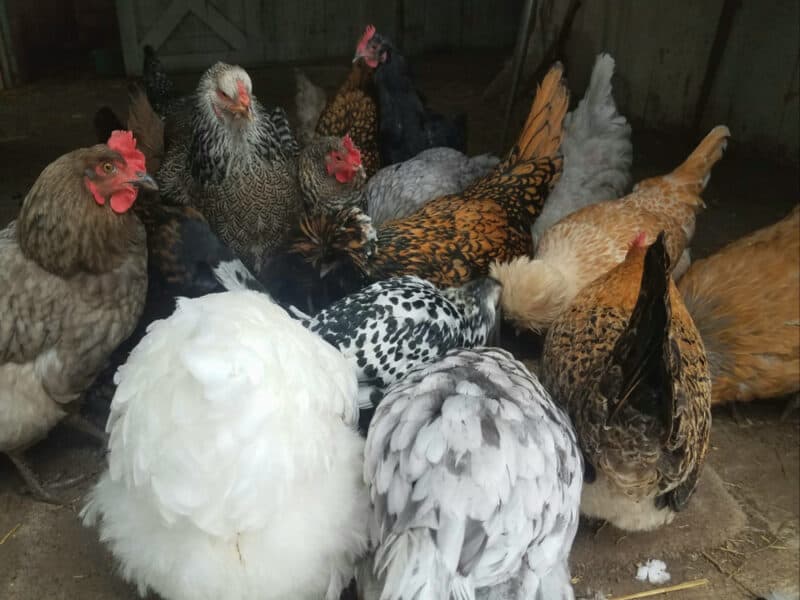
While it’s acceptable to mix flocks of chickens of different ages and breeds most of the time, you need to be careful about how you do it. Brooding different fowl species can be problematic, particularly if they are of vastly different sizes.
Often, curiosity (which starts innocent enough) leads to pecking, which then leads to eating.
6. Crippled Animals
A mistake that many novice chicken keepers make is allowing dead or crippled birds to remain in the pens. Sometimes this is done with the genuine belief that the injured chicken will make a recovery on its own. Other times, you might just not notice an injured or dead animal until it’s too late.
Either way, leaving an animal like this in the pen can be dangerous because it only invites more pecking and encourages cannibalistic behaviors.
7. Slow-Feathering Birds
As I mentioned earlier, you need to be careful about mixing chickens of different breeds, ages, and sizes. You also need to be wary of mixing slow-feathering chickens into a mixed flock. Birds that are slow to feather have their immature, more tender feathers exposed for quite a long time, leaving them vulnerable to pecking (and of course, to cannibalism).
8. Inadequate Nesting Space
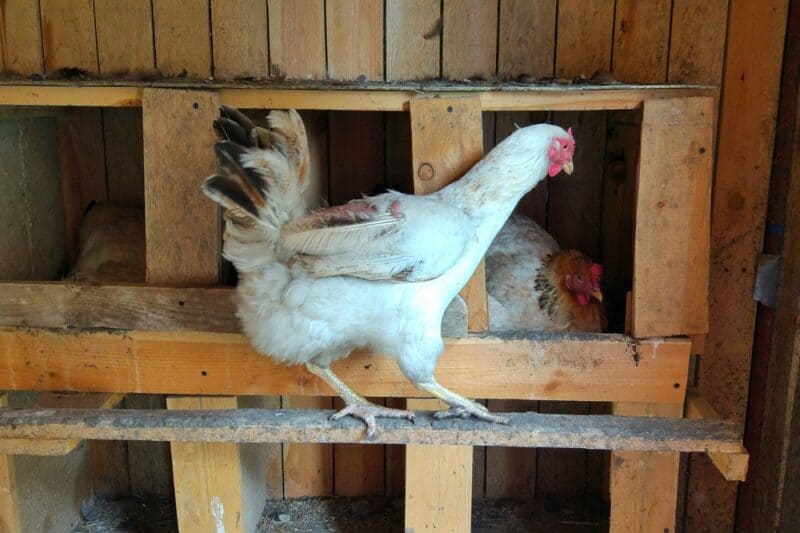
Too few nesting boxes can be problematic, leading chickens to turn on each other in a cannibalistic way. As you might know, it can also lead to egg-eating behaviors.
You also need to make sure that you don’t place any bright lights near the nesting areas, as this, too, can lead to cannibalism.
9. Introduction of New Animals
Any time you add or remove chickens from your flock, you’re disrupting the pecking order. You might not see it, but this disruption can be severe.
10. Prolapse
Last but not least, the vent area is the most common place where chickens will begin to peck at each other (which leads to eventual cannibalism). This behavior is often started by a simple prolapse.
Prolapse is when the uterus stretches and tears, taking a long time to return to the body after the egg is laid. It’s common in young chickens who started laying too soon as well as layers that are extremely overweight.
How to Prevent Cannibalism in a Flock
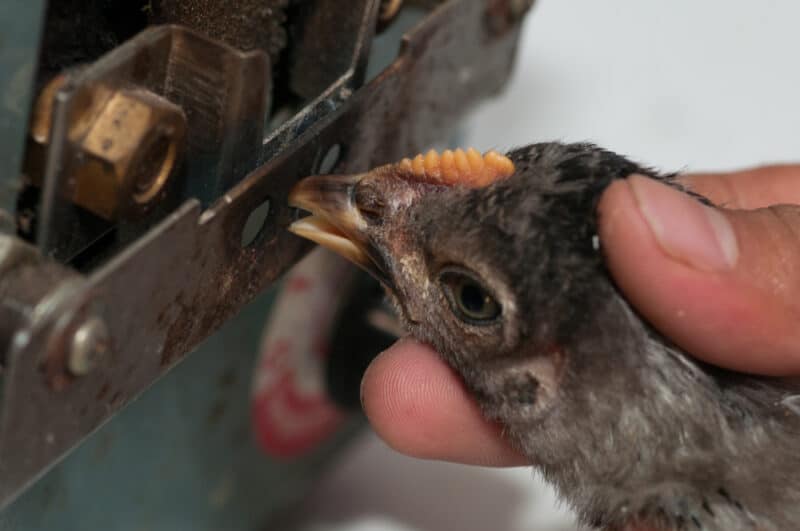
Now that you know what causes cannibalism, here’s how to avoid it.
1. Address the Living Conditions
First, take a look at the conditions you are providing for your animals. At a minimum, adult chickens need 2-square-feet per bird in the coop and more than that in the run.
You can get away with less space for chicks or bantams but buying game birds or heavy meat birds will need much more space. I always double the recommendations to be on the safe side.
Adjust the temperature whenever possible. Young chickens should be brooded at a temperature of 95°F for the first week, but it is important that you gradually decrease the temperature each week thereafter. Eventually, you should get the temperature to around 70°F. This should be a gradual change done at a rate of about 5°F per week.
When you heat the brooder, only measure the temperature at the height the birds are at when they’re standing directly beneath the heat source. Contrary to what some people assume, you don’t need to heat the whole brooder.
Similarly, check on the light. Avoid white light bulbs, especially those larger than 40-watts. Don’t provide constant light.
2. Fine Tune the Feed and Water
Make sure there are plenty of feeders and waterers to go around. If there’s not enough space, this will lead to aggression.
Ensure that the chicken feed you are using contains all the vital nutrients chickens need. In particular, check for methionine (a nutrient that is often deficient in the diets of so-called “vegetarian” chickens).
3. Be Careful When Introducing New Chickens
If you can, raise a flock composed solely of chickens of the same age, size, and breed. Avoid brooding chickens that have crests, beards, or feathered legs with animals that do not have these traits.
If you must mix breeds, make sure there are several of each type to provide some protection against bullying. Introduce new chickens gradually and carefully.
A good way to do this is by splitting the pen with a wire wall for a week so the chickens can get used to each other. You can also introduce new birds when everyone is on the roost for the night. This is a gentler introduction that can prevent bullying.
4. Upgrade the Nesting Boxes
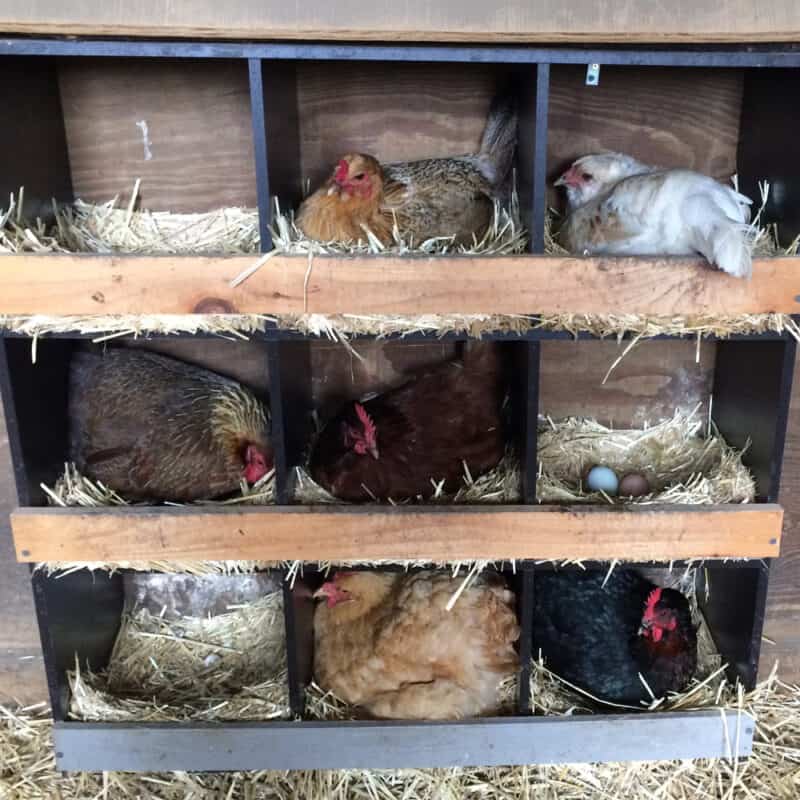
Make sure there is at least 1 nesting box for every 4 hens. These areas should be dark and secluded.
5. Be Vigilant for Problems
Inspect your chickens often. You might not notice a bullying problem until it becomes extreme. Interacting with your flock regularly will give you a good idea of the flock dynamics so you can prevent problems.
6. Prevent Prolapse
Provide your hens with a healthy diet and plenty of exercise so that they do not become overweight. Treat prolapse when it occurs (blood streaks on the eggshell are a good sign that it’s happening). You may need to isolate hens with extreme or recurring prolapse issues.
7. Let Them Burn Off Their Energy
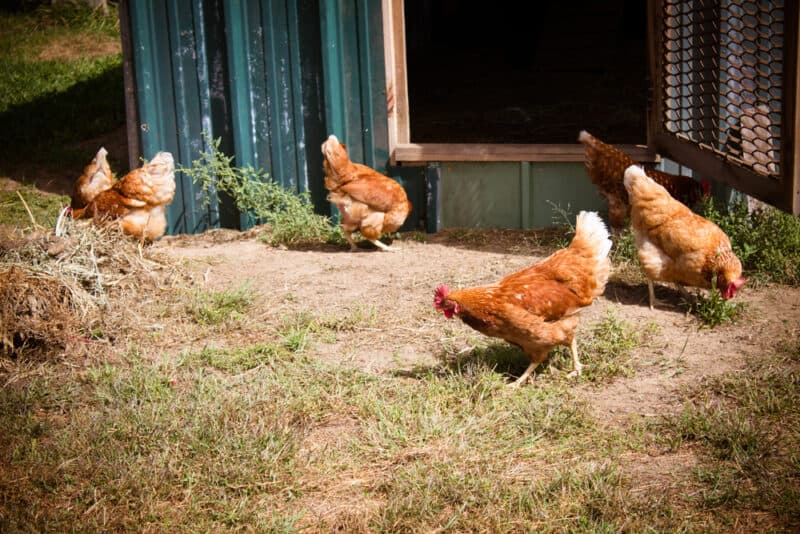
Allowing your hens to free-range will serve two purposes. First, it will provide them with more space. Second, it will keep them busy and distracted, giving them time to peck for insects, greens, and other food instead of eating other chickens.
8. Provide Distractions
Hang things like shiny, colored items in the coop. You don’t have to go out and buy expensive chicken toys, but giving your chickens some distractions (especially in the winter) is a good way to prevent pecking behaviors.
9. Trim Beaks
Finally, know that you may have to take drastic measures in problematic flocks.
Trimming beaks is a controversial practice but for commercial producers and the owners of chickens who, for whatever reason, cannot kick this behavior, it is necessary.
It involves removing about a third of the beak tip, making it difficult for your birds to harm each other. If you decide to do this, make sure you do your research and have the actual trimming done by someone with experience. It can be dangerous.
Addressing Incidents of Cannibalism Among Your Chickens
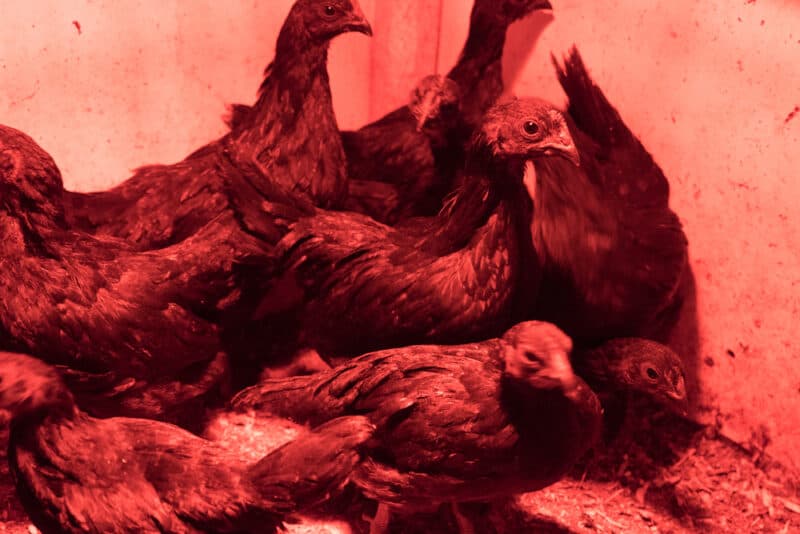
Cannibalism can be caused by a long list of factors, so if you have this problem in your flock, it might take you some time to figure out what caused it.
This should be your first step (beyond removing any injured or dead birds, of course). Figure out what went wrong and try to fix it.
Then, take steps to prevent those conditions in the future, lowering the pen temperature and darkening the brooder or coop with red bulbs. Even if you don’t implement this as a long-term fix, it should help calm chickens down in the meantime.
If you know that it is specific chickens doing all the bullying and cannibalizing, you may need to remove them from the flock.
Finally, treating injured birds should be the first thing you do – but it bears mentioning again since it is so important. Apply an ointment to any wounded areas. Ideally, you should use something like Blu Kote, which will not only disinfect and begin to heal the injury but also change it to a different color.
Remember, red, bloody areas attract more pecking. Turning it blue with a spray like Blu Kote may help prevent future injury. If it’s a minor injury, it might make more sense to spray the wound and allow the chicken to remain in the flock. Although badly hurt chickens should be removed from the flock to recover, this does disrupt the pecking order and should be avoided if not 100% necessary.
Keep Your Chickens Safe!
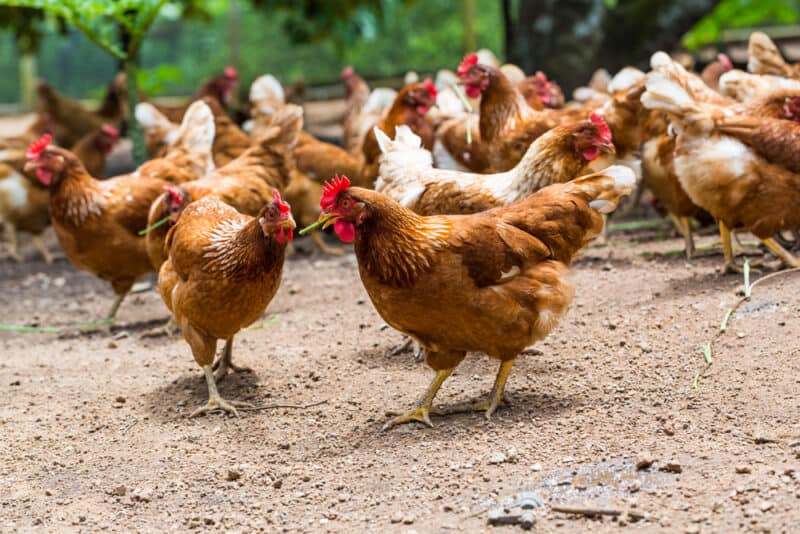
Preventing pecking behaviors and cannibalism is essential if you want to keep a healthy, productive flock.
Although it’s something that no chicken keeper ever wants to deal with, you can stop chicken cannibalism in its tracks and get back to normal by following the tips above.
